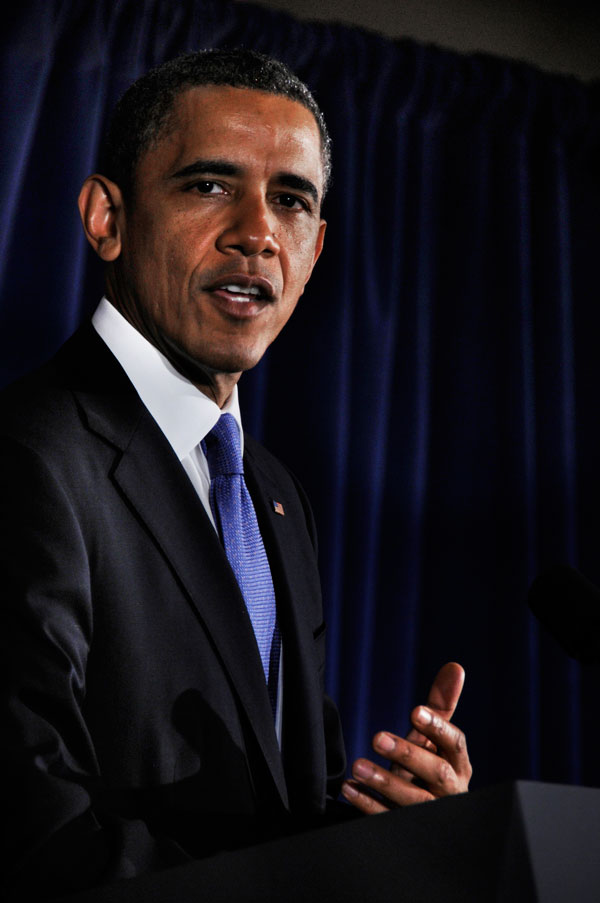With President Obama’s historic re-election the time has come to turn the page in Washington and work toward getting our country back on track. Republicans harped that the president had four years but didn’t do enough, but they were an obstacle to him every single step of the way. If, during the next two years, Republicans don’t become more cooperative, they will, no doubt, feel the repercussions at the voting booth. America is sick and tired of the “Politics of No” and it’s now time to turn the corner toward job creation and economic recovery.
Hurricane Sandy is being given some credit for Obama’s win, in that he showed leadership in addressing the crisis, and also because the disaster slowed Romney’s momentum and muted his negative attacks. Obama’s acknowledgement that climate change is real made a difference for many vot- ers — especially in New York City and the metro region, where we experienced firsthand the superstorm’s devastat- ing impact. Living — no, surviving — without electricity, heat, hot water, cell phones and computers, elevators and, in many cases, cold water, too, for the better part of a week brought home the reality that the oceans are rising and that, as of now, we are simply woefully unprepared for it. Mayor Bloomberg and Governor Cuomo did a great job sounding the alarm and calling for mandatory evacuation of Zone A throughout the city. The mayor was a steady leader throughout the crisis — as he was the year before when Hurricane Irene nearly blew into town.
However, the 14-foot storm surge was simply far greater — about 2 feet higher — than anticipated, flooding the E. 13th St. Con Ed power plant and plunging Manhattan south of 39th St. into extended darkness.
Now that Obama thankfully has a mandate to lead us through a second term, it’s up to our government at all levels to address the threat of storm surges to our city and figure out how we can prevent this from happening again. This editorial is being written from MetroTech, just over the Manhattan Bridge in Brooklyn, where NYC Community Media has relocated until our Canal St. office — whose base- ment (containing our electrical and IT systems) was flooded — is ready to be reoccupied. That will be a few weeks. But the storm and blackout have left some wondering about Lower Manhattan’s long-term future. In short, if Wall St., for one, keeps being flooded, will the financial sector stay here? New Orleans used to be the financial capital of the South until the levees failed and the financiers abandoned it.
Assemblymember Deborah Glick has gone as far as to say there should be no more new construction in Zone A. Of course, the real estate industry, after Sandy, immediately said that people will keep building and living on the water, knowing the risks, because the coast always will have its allure. At a certain point, however, living by the water could become untenably dangerous unless something is done. Yes, it would cost billions to build storm surge barriers in the harbor to protect the city, but, again, think about the price tag of future storm damage. Some think creating wet- lands could also blunt the impact of hurricanes, though one wonders if this really fits in a built-up area like Manhattan. Glick also says the flood-zone map needs to be re-evaluated, and she’s right. Just take Westbeth, which is just outside Zone A, but was one of the hardest-hit locations on the Lower West Side. We’re thankful to Brooklyn’s Community News Group for graciously giving us desks to work from until we return to Downtown Manhattan. We’re also grateful to CUNY Journalism School for giving us use of their newsroom last week to put out a post-Sandy issue of The Villager.
We’re New Yorkers, and we pick ourselves up and carry on. Just like after 9/11 — it’s just what we do. But even New Yorkers can only bear so much.
New York is the greatest city in the world, and, in our view, Downtown Manhattan the jewel in the crown — but we have just seen, painfully, frighteningly, how very vulnerable we are. Steps must be taken to ensure our city’s future viability.


















